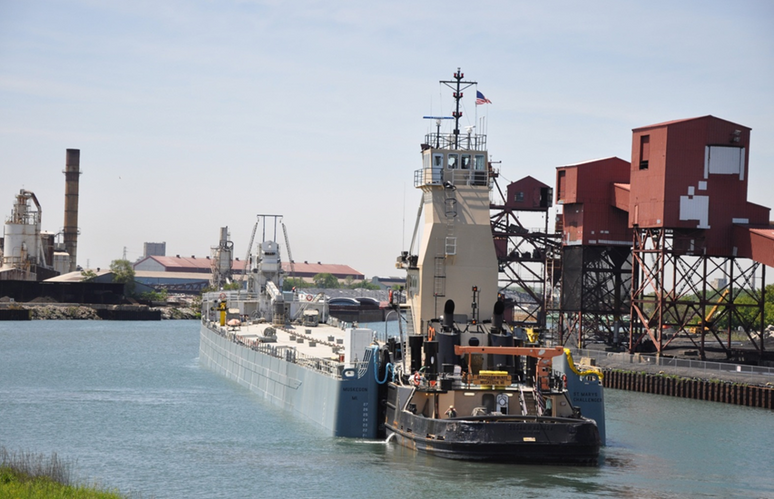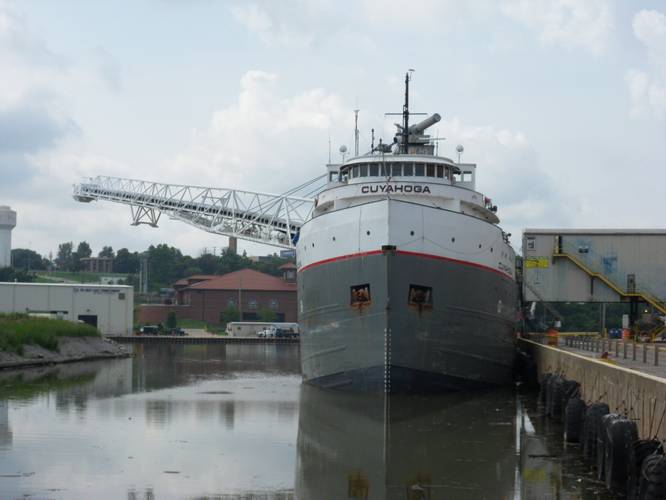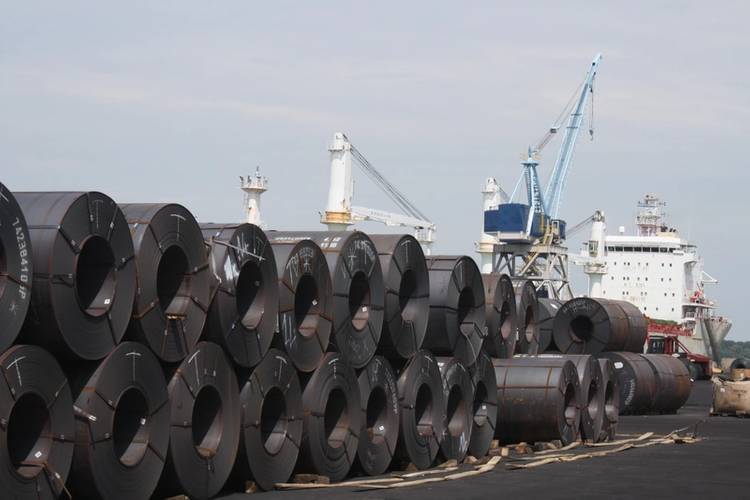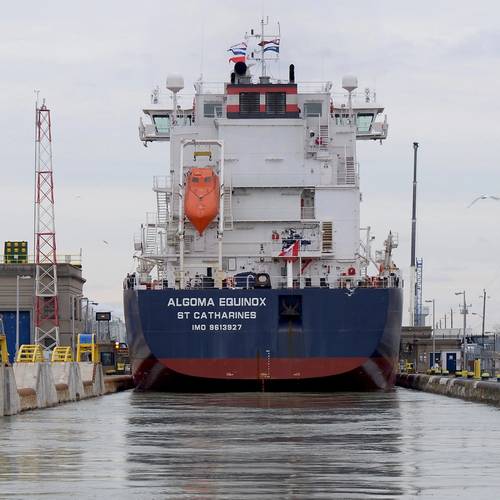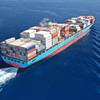Seaway Cargo Movements Pick up Ahead of Winter
Shipments through the St. Lawrence Seaway remained strong in October as North American manufacturers and cities stockpiled vital materials in advance of the coming winter and farmers relied on the waterway to export the new harvest.
According to the St. Lawrence Seaway, total cargo tonnage from March 25 to October 31 reached 29.6 million metric tons, up 4.5 percent over the same period last year, as robust grain and steel shipments have more than offset a drop in iron ore shipments through the Seaway.
“Autumn is typically the St. Lawrence Seaway’s busiest time as North American industries stockpile raw materials in advance of the winter months and cities across Canada and the U.S. bring in much-needed salt for road safety,” said Stephen Brooks, President, Chamber of Marine Commerce. “In October, farmers started shipping the new grain harvest via the Seaway to countries around the world. After losing sailing days due to ice at the start of the season and with only two months left before the end of season, Great Lakes ships are working flat out. This frantic pace is necessary from now to the end of December to make up for lost time.”
New grain harvests helped year-to-date total grain shipments (for Canada and the U.S.) reach 8.4 million metric tons, up 49.9 percent. Grain shipments from Toledo to Ontario and Quebec, for example, continued to be strong in October due to demand for corn for ethanol production and animal feed.
Steel shipments to U.S. ports such as Toledo, Cleveland, Detroit, Burns Harbor and Milwaukee for use in the automotive and construction industries tallied 1.8 million metric tons, up 76 percent.
These increases have been offset by a 26.5 percent decrease in iron ore volumes through the system and an 11 percent decrease in coal tonnage.
Approaching winter weather has spurred municipal stockpiling of road salt; salt shipments via the Seaway now total 2.3 million metric tons, up by 34 percent this season. NA mines have been working hard to replenish city reserves in Canada and the U.S. and the Seaway is also seeing salt imported from overseas to meet the high demands. For example, salt is being transported out of the Port of Cleveland and Fairport Harbor, Ohio to U.S. towns all over the Great Lakes as well as to Ontario and Quebec.
Captain Scott Bravener, President of Lower Lakes Towing Ltd. and Lower Lakes Transportation Company, said, "The demand for salt has gone up dramatically this season. City reserves everywhere were completely depleted from last year's winter. In the U.S., we have been transporting road salt out of the Port of Cleveland and Fairport Harbor to U.S. towns all over the Great Lakes, as well as through the Seaway to Toronto, Hamilton, Oshawa and Valleyfield, Quebec."
Cement products, destined for construction projects across Great Lakes U.S. states, totaled 1.2 million metric tons, up 9 percent. Ships have been busy transporting clinker and other raw materials to St. Marys Cement’s (Group Votorantim) plants in Charlevoix and Detroit, Michigan, as well as moving finished products to their terminals throughout the Lakes.
William Asselstine, Vice-President Logistics, St. Marys Cement (Group Votorantim), said, “U.S. construction activity is beginning to pick up, which has had a direct effect on cement demand. Despite the long winter and slow start to the construction season, during the last few months, ships have been very busy transporting clinker and other raw materials through the St. Lawrence Seaway to our cement plants in Charlevoix and Detroit, Michigan and Bowmanville, Ontario as well as moving finished products to our terminals throughout the Great Lakes. This is the most cost-effective and environmentally responsible way for us to move these materials.”







